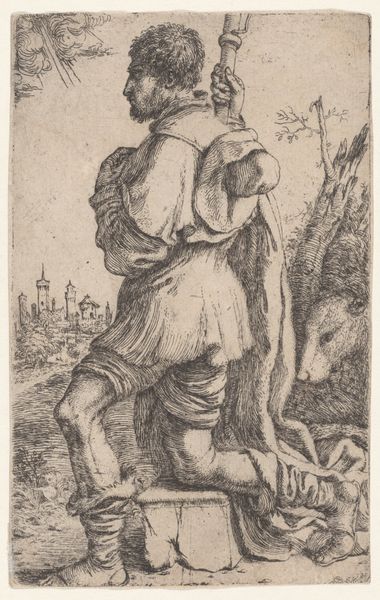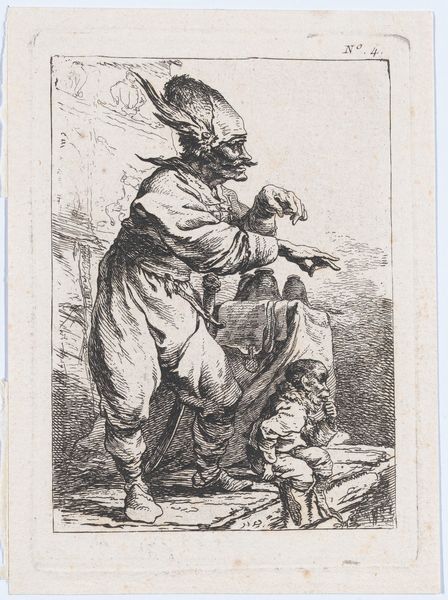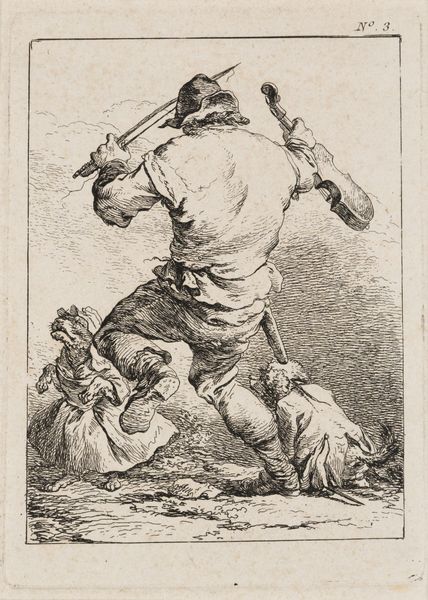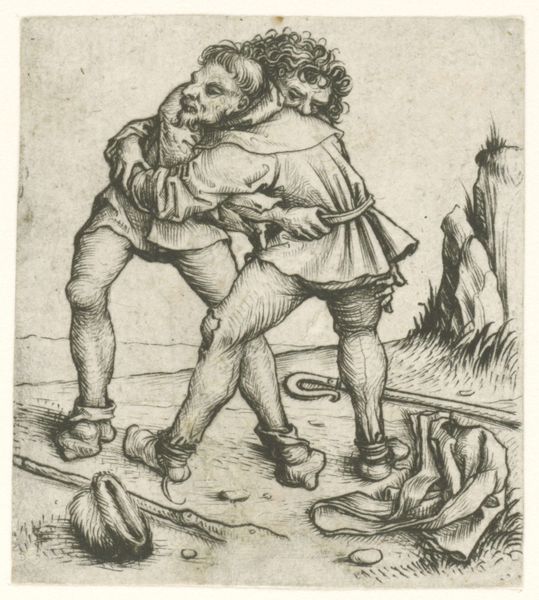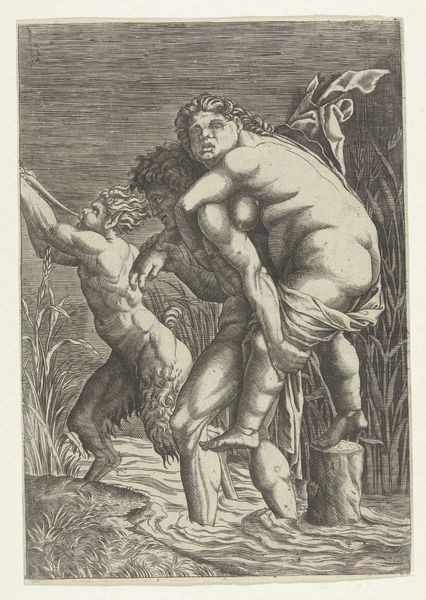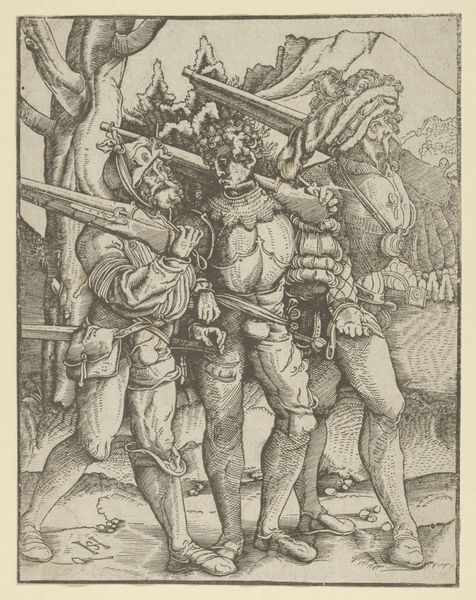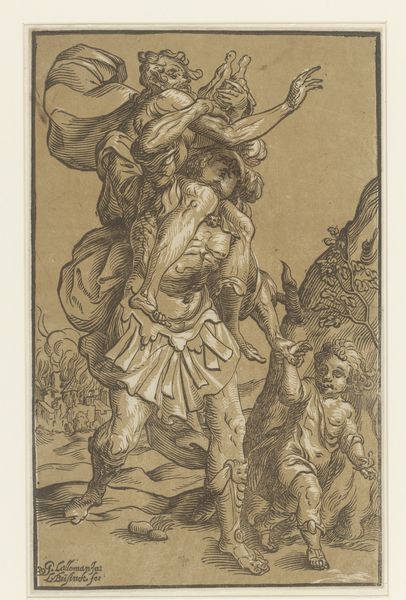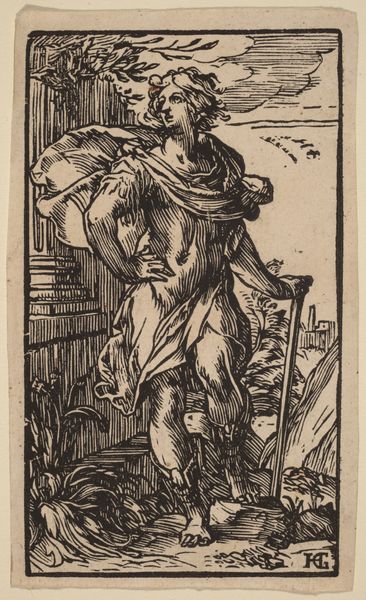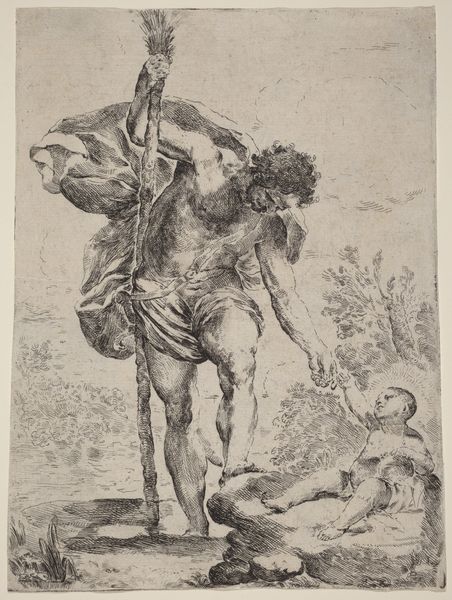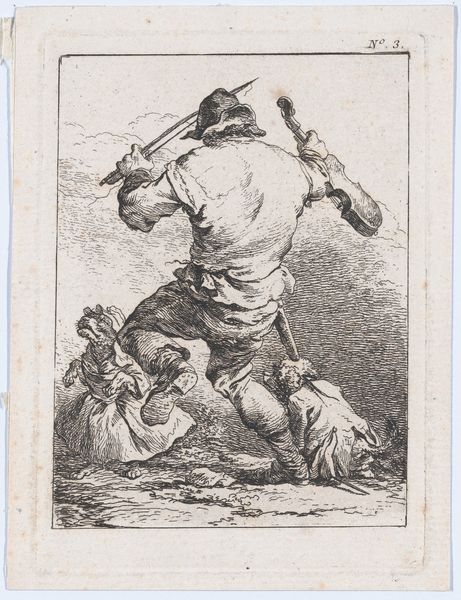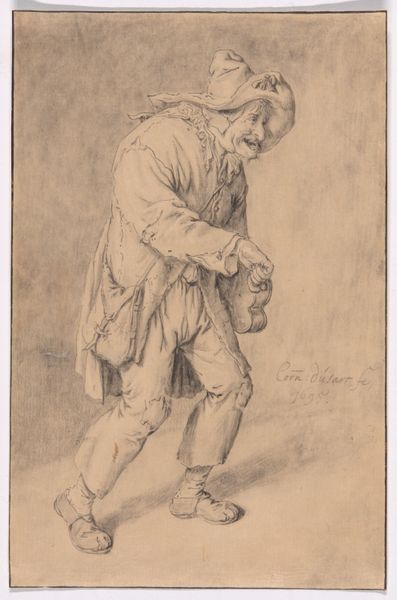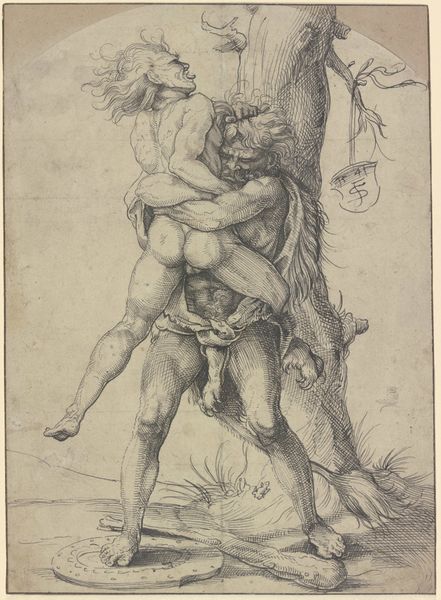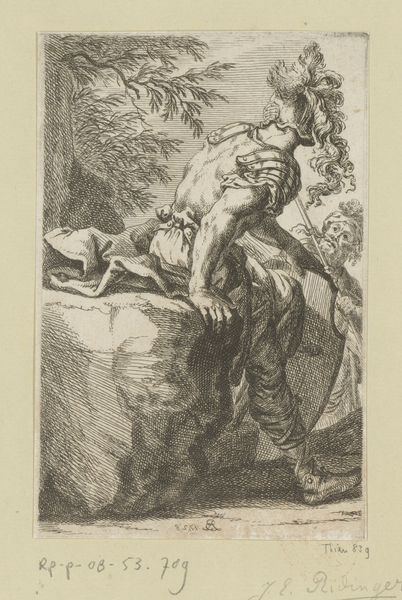
David carrying the head of Goliath, which he holds by the hair 1620 - 1630
drawing, print, engraving
portrait
drawing
narrative-art
baroque
figuration
men
portrait drawing
history-painting
italian-renaissance
engraving
Dimensions: Plate: 10 1/16 × 6 1/8 in. (25.5 × 15.5 cm) Sheet: 10 3/16 × 6 5/16 in. (25.9 × 16 cm)
Copyright: Public Domain
Curator: What strikes me immediately is the graphic weight of this print; the sheer labor evident in the dense cross-hatching. Editor: Indeed, and that's especially fascinating given that we're looking at "David carrying the head of Goliath, which he holds by the hair" created between 1620 and 1630 by Giuseppe Caletti, also known as Cremonese. It resides here at the Metropolitan Museum of Art. But how does this brutal image resonate beyond just craft, from your perspective? Curator: Beyond the materiality, consider the power dynamics it portrays. A young David, often romanticized, here performs a gruesome task, holding Goliath's severed head. The visual language speaks of triumph but also profound violence. I see it questioning the construction of heroes, exploring what victory truly entails. There's a reading here that critiques the patriarchal and religious frameworks legitimizing such acts. Editor: I see what you mean, and note how Caletti foregrounds the weight of the task. David is almost buckling under the giant's head, its grotesqueness contrasting his youthful features. It isn’t some sanitized image of glory; it is a hard-won victory purchased through brutal material actions. The act of physically carrying the head--that's where real consequences lie. Curator: And how this very act of representation further cements a specific narrative of dominance. The print, made through reproducible engraving, circulated and thus further embedded a specific, potent and problematic ideology. Editor: Absolutely. Even the landscapes plays its part. Look closely; there are very faint traces of the violence still raging on even further in the background, reinforcing my understanding about this whole scene, nothing about is simply glorious. Curator: Precisely! And thinking about the artistic movements and themes, this drawing style pulls a lot from the Renaissance, but the subject matter is pure Baroque. Editor: This piece becomes something more than a celebration. The artist prompts an uncomfortable reflection on what happens to bodies in power, and more importantly, how our social fabric engages with it all. Curator: I completely agree. It’s more than just biblical narrative. It challenges us to confront the uncomfortable realities underpinning societal power and victory.
Comments
No comments
Be the first to comment and join the conversation on the ultimate creative platform.
